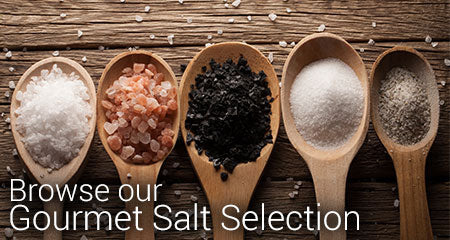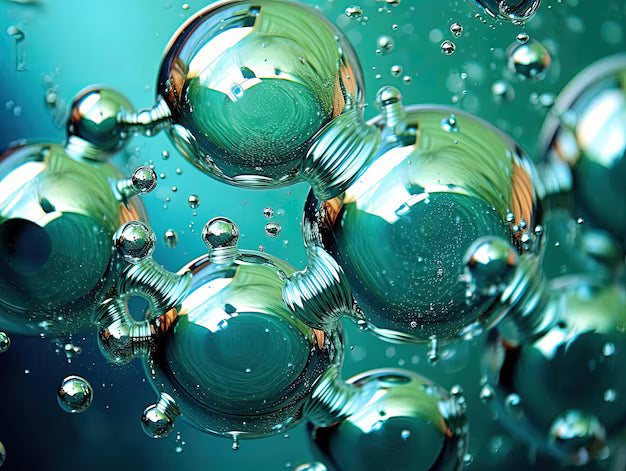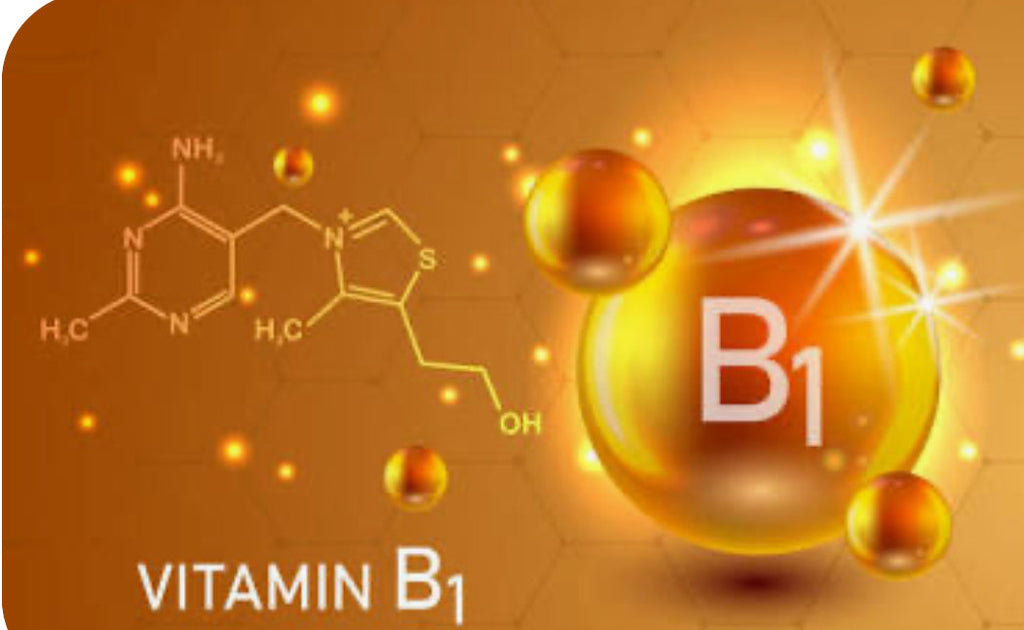Uncouple Your Mitochondria, Prevent and Reverse Metabolic Disease & Get Your Energy Back! - Blog # 73

Happy Friday Everyone! Welcome back to another Friday blog. Today I want to talk about our energy production. Why are we so tired - all the time? It is quite obvious the problem lies in our energy production system = mitochondrial function. So, what are mitochondria, what are their requirements, and how can we increase their numbers, protect and “uncouple” them to boost function and increase our energy levels? Let’s delve in.
Mitochondria are organelles (tiny functional organs) found inside our cells. They are ancient symbiotic prokaryotic archaea (related to bacteria) at the center of our metabolism that produce our energy. They come from our mother and have their own DNA. They divide and replicate, produce RNA and proteins (coded in their DNA) completely independent of our own cell division and function. They produce energy to run our body in the form of ATP (adenosine triphosphate) to burn/process the food we eat. They use aerobic respiration - O2 (oxygen) - Just like exhaust is produced from burning/combusting gas in our vehicles, waste in the form of ROS (reactive oxygen species) and RNS (reactive nitrogen species) is produced from burning our food - with glucose/carbohydrates being the dirtiest fuel. These ROS are oxidizing, causing oxidative stress - hence, damaging to their surroundings and anything they touch. We require plenty of antioxidants to neutralize them. This is why you want the highest quality food that burns the cleanest! ROS are inflammatory - literally setting your body “on fire” if you don’t consume enough “anti-inflammatory foods.”
“Oxidative stress caused by an imbalanced metabolism and an excess of reactive oxygen species (ROS) lead to a range of health disorders in humans. Our endogenous antioxidant defense mechanisms and our dietary intake of antioxidants potentially regulate our oxidative homeostasis.” This is why it is so important to consume antioxidant-containing foods to scavenge these ROS and RNS. “Energy metabolism, the process of generating energy (ATP) from nutrients, comprises a series of reactions in which biomolecules are oxidized to simpler molecules and the energy released in these thermodynamically favorable processes is harnessed to phosphorylate ADP. Redox reactions that involve the transfer of electrons from reduced organic molecules, to acceptor molecules such as NAD+, NADP+ or oxygen, are key components of these pathways. Reactive oxygen species (ROS) such as superoxide anion radical (O2∙−) and hydrogen peroxide (H2O2) are products or byproducts of metabolic redox reactions. These species can participate in cell signaling events and their formation can affect the cell and tissue structure and function.”
These products/by-products of metabolism such as H2O2 (hydrogen peroxide), superoxide anion radical O2−, ammonia, CO2 (carbon dioxide) and even water are important in clearing and/or utilizing waste products and killing pathogens such as bacteria and viruses. So, there is a ‘Goldilocks’ - or sweet spot - balance that is very important to maintain. Smoking DESTROYS your mitochondria by depriving them of oxygen.
Mitochondria produce ATP through the ETC (electron transport chain). Check out blog # 64! Our mitochondria use several pathways and produce metabolic precursors for macromolecules such as lipids (fats), proteins, DNA and RNA. They also are highly involved in signaling and communication with the rest of the cell through metabolites such as bioactive proteins, signaling gas molecules called gasotransmitters, ROS, RNS, modulation of calcium fluxes and apoptosis (cell death). Think about this for a second. In the body, if you need instant messages to get where they need to go what better way than in the form of a gas? NO (nitric oxide), for example, has multiple jobs in the body - telling the blood vessels to dilate, signaling protein transporters to come to the cell membrane to pick up glucose, killing pathogens and a host of other things.
Many of these metabolites act as secondary messengers that have profound epigenetic (above the genes) changes - this determines which genes to turn on and which to turn off. In fact, only 3% of our DNA codes for proteins. The rest is communication and protection. Further, our DNA experiences around 10,000 mistakes or problems every day. If we didn’t have these protective mechanisms, we would age super fast. You can think of your DNA as your hard drive and epigenetics as your software. Your hard drive is relatively inert until you apply the software.
As we can see, what we eat and what we are exposed to (environmental toxins) have a far greater impact on our health than the actual genes we carry in our DNA. Every person alive has oncogenes (cancer genes) that are waiting to be expressed. We can keep these genes turned off by eating the right foods - like methyl donors (beets, dark leafy greens) - and avoiding environmental toxins. We can also turn on genes that keep us healthy and prevent disease, such as tumor suppressor and some tumor necrosis genes that target and kill cancer cells.
The production of ATP is damaging to both mitochondria and to us. Mitochondria couple - or combine - protons with O2 during the production of ATP. This causes damage. They can mitigate this damage by “uncoupling” - somewhat like a pop-off valve on a pressure cooker - releasing potential energy from the system in the form of heat. This uncoupling helps to protect cells against apoptosis (death). “Mitochondrial inefficiency through proton leak, which uncouples substrate oxidation from ADP phosphorylation, can comprise as much as 30% of the basal metabolic rate. This uncoupling is hypothesized to protect cells from conditions that favor ROS production.” In other words, mitochondrial uncoupling protects mitochondria from damage. They divide to make more mitochondria to handle the workload, while literally throwing away up to 30% of dietary calories. So, theoretically, you could eat 30% more calories and maintain your ideal weight as well as extend your lifespan - another great reason NOT to count calories. They don’t actually matter as much as what you eat and your lifestyle.
We have 5 UCPs (uncoupling proteins) - and are just learning what they do. Currently the most is known about UCP1. “Recent evidence indicates that an increased expression and activity of UCP2 are well correlated with neuronal survival after stroke and trauma.” Dysfunction with mitochondrial uncoupling is linked to cancer, Parkinson's, Alzheimer's and a host of other metabolic diseases.

“In particular, altered methylation and hydroxymethylation levels of mitochondrial DNA (mtDNA) have been found in animal models and in human tissues from patients affected by cancer, obesity, diabetes and cardiovascular and neurodegenerative diseases. Moreover, environmental factors, as well as nuclear DNA genetic variants, have been found to impair mtDNA methylation patterns.”
Environmental toxins - such as glyphosate - significantly alter and interfere with our methylation processes - to our detriment. “Feng and co-workers analyzed D-loop methylation in 44 colorectal cancer tissues and in their corresponding adjacent non-cancerous tissues, finding that the D-loop of non-cancerous tissue was methylated, while in the majority of cancer tissues, the D-loop was unmethylated.” D-loop is found within the mitochondria. When you eat foods high in methyl donors - like beets, for example, your body can add these methyl groups to the genes that code for cancer keeping them turned off. A fully methylated gene is NOT expressed and is turned “off.” When we don’t provide these methyl groups, these genes can get turned “on.” This reveals the importance of eating foods that can provide these methyl groups!!
“Mitochondrial metabolites can be seen as an interface between metabolic and signalling networks, coordinating metabolic activity based on nutrient availability.” Mitochondria also are in close communication with our gut microbes and rely on metabolites produced from the 7-step shikimate pathway, that produces B vitamins and aromatic amino acids (essential amino acids) from the gut microbes, which is why poisonous toxins, such as glyphosate, are so damaging. Glyphosate BLOCKS this pathway and profoundly damages our mitochondria in multiple ways.
When mitochondrial damage occurs, they produce more ROS. This is highly damaging to mitochondria as well as the surrounding tissue, resulting in either dead/damaged/malfunctioning mitochondria. Mitochondrial dysfunction is implicated in aging and the diseases associated with aging. Many diseases are linked to dysfunction including cancer, T2D (type 2 diabetes), Alzheimer’s, dementias, immune function, Autism, depression and mental disorders, migraines, Parkinson’s, neurodegeneration, obesity, epilepsy and vascular dysfunction to name a few.
Mitochondria are found in high numbers in organs that have a high energy demand, such as muscle, heart and brain tissue. They are also very concentrated in brown adipose (fat) tissue and very high in babies. This is why children run around non-stop all day, while we sit back and say “wow, wish I had some of their energy!” So, mitochondria are concentrated in brown adipose tissue. “Brown adipose tissue (BAT) specializes in burning fat and is responsible for adaptive, nonshivering thermogenesis in mammals.”
However, most of us have too little brown fat and too much white adipose tissue - belly fat. When we are obese, we have significant oxidative stress in our adipocytes (fat cells). The excessive accumulation of triglycerides (from eating a high carbohydrate diet) induces a low-grade pro-inflammatory state - leading to cellular dysfunction and the production of many adipokines (inflammatory molecules). High triglyceride levels are way more to blame in cardiovascular disease than the scape goat LDL cholesterol. This is why obesity is SO inflammatory and detrimental to health - and why Covid-19 affected some more than others.
Mitochondria produce roughly 140# of ATP every day. 😳 Holy moly! This may be more than some of us weigh. What happens to all this ATP? We use this energy as our currency - we burn it up - just performing cellular processes, not to mention energy expenditure during exercise. Making ATP is inherently damaging to mitochondria. When we eat, mitochondria go to work. They are capable of utilizing either a glucose-burning pathway (more damaging) or fat-burning (cleaner like jet fuel). The more we eat, the more overwhelmed our mitochondria become. The more OFTEN we eat, the more damage occurs - they become overworked and become dysfunctional. They NEED a break! As you can see, we NEED them to be healthy and produce energy properly. If you feel tired all the time, you most likely have a mitochondrial problem.
So, what do they need to stay healthy and protect themselves from damage? They love polyphenols and ketones - so HP-EVOO is one of their favorite foods! Mitochondria rely on 2 very important antioxidants to protect them from oxidation: Melatonin and Glutathione. We tend to be deficient in both - for several reasons - our heavily processed diet and environmental toxins, like glyphosate.
“Melatonin protects mitochondria by scavenging reactive oxygen species (ROS), inhibiting the mitochondrial permeability transition pore (MPTP), and activating uncoupling proteins (UCPs). Thus, melatonin maintains the optimal mitochondrial membrane potential and preserves mitochondrial functions.” Mitochondria produce some melatonin to protect themselves, but much of our melatonin is found in the gut, produced by gut microbes for use during the day. Melatonin is secreted by the pineal gland in the brain at night (stimulated by darkness) and is also involved in the circadian rhythm. Melatonin prevents gastrointestinal ulcerations, reduces secretion of hydrochloric acid, enhances regeneration of the epithelium, stimulates the immune system and increases micro-circulation. “Because of its unique properties, melatonin could be considered for prevention or treatment of colorectal cancer, ulcerative colitis, gastric ulcers, irritable bowel syndrome, and childhood colic.”
Glutathione (GSH) is the most abundant intracellular antioxidant that prevents damage to mitochondria and other important cellular components caused by ROS, peroxides and even heavy metals. Oxidized glutathione is used as a biomarker of mitochondrial disease. It has roles in gene expression and the cell cycle as well. It has the amino acid glycine attached. This is important because glycine’s spot during protein synthesis can be substituted by glyphosate - thus depleting glutathione as well as glycine. Dysfunction of the mitochondria results in low GSH levels in both primary (genetic) and “secondary mitochondrial impairment, such as organic acidemias, Friedreich ataxia, Alzheimer disease, Parkinson disease, amyotropic lateral sclerosis, and Rett syndrome.”
In addition to these antioxidants, mitochondria love KETONES. Ketones literally cue mitochondria to uncouple and divide, multiplying the number of mitochondria available to do the work load. “Mitochondrial uncoupling can be defined as a dissociation between mitochondrial membrane potential generation and its use for mitochondria-dependent ATP synthesis.” When they uncouple, they protect themselves from damage and divide. The more mitochondria you have, the more overall energy gets produced - some calories get thrown out in the form of heat production - and the less damage is incurred to each mitochondria due to less ATP per mitochondria produced.
“Mitochondrial uncoupling protein 1 (UCP1) is responsible for nonshivering thermogenesis (heat production) in brown adipose tissue (BAT). Upon activation by long-chain fatty acids (LCFAs), UCP1 increases the conductance of the inner mitochondrial membrane (IMM) to make BAT mitochondria generate heat rather than ATP.” For example, long-chain fatty acids are found in EVOO! This also stimulates removal of old non-functioning mitochondria and replaced with new upgraded ones.
There are multiple ways to uncouple your mitochondria, increase your mitochondrial force, waste energy to promote normalizing weight, boost mitophagy (mitochondrial self-eating/cleanup) - get rid of malfunctioning ones - and get your energy back. More are being discovered!
- MCT - medium chain triglycerides - found in coconut (~60%), goat and sheep’s milk and their cheeses (~30% MCT) supply FFAs (free fatty acids). “FFAs with a carbon chain between C12 and C16 have a very potent effect due to the production of ketones…FFAs are a required co-factor for UCP-1-catalyzed proton transport.”
- CLA - conjugated linoleic acid - found in meat and dairy products of ruminants (grass-fed beef, milk, butter). “CLA increased both mRNA and protein expression of uncoupling protein-1 (UCP1).” “CLA and some trans isomers of oleic acid are produced by microorganisms in the rumens of ruminants.” “Cows grazing pasture and receiving no supplemental feed had 500% more conjugated linoleic acid in milk fat than cows fed typical dairy diets...mainly by Bifidobacteriumbacteria strains inhabiting the gastrointestinal tract.”
- Wormwood - Artemisia annua works by stimulating production of UCP-1 thus preventing obesity and fatty liver. “Artemisia annua is a botanical plant that may prevent viral growth. Artesunate is a drug extracted from artemisia annua plant that with anti-malaria activity that may also prevent viral growth. Giving ivermectin, camostat mesilate, Artemisia annua, or artesunate may help decrease COVID-19 virus in the body and ultimately help decrease the chance of clinical symptoms getting worse from COVID-19 and may prevent patients’ hospitalization.”
- Ashwagandha - Withania somnifera (WS) - “WS supplementation increased oxygen consumption and enhanced mitochondrial activity in brown fat and skeletal muscle in the HFD-fed mice. In addition, it promoted browning of subcutaneous fat by increasing mitochondrial uncoupling protein 1 (UCP1) expression.” HFD = high fat diet (western)
- Black Cumin Seed - “Thymoquinone (TQ) is a major phytochemical compound found in the medicinal plant Nigella sativa an annual flowering plant in the family Ranunculaceae.” TQ is prevalent throughout Egypt. TQ has potent inhibitory effects on lung, prostate and breast cancer cell lines. It has powerful anti inflammatory, antioxidant, anti-diabetic, antibacterial, antifungal, antitussive and neuroprotective properties. It appears to have powerful protective properties for mitochondria against apoptosis as well as dysfunction. It also appears to block ATP synthase in pathogenic microbes such as E. Coli. Many athletes are taking it to boost performance.
- Melatonin - Powerful hormone and antioxidant. Activates uncoupling proteins and more as previously discussed. Highest levels are found in raw pistachios. You can also boost levels by getting morning sunlight and evening sunset - or light a fire for near-infrared.
- Glutathione - “Several studies suggest that grass-based diets elevate precursors for Vitamin A and E, as well as cancer fighting antioxidants such as glutathione (GT) and superoxide dismutase (SOD) activity as compared to grain-fed contemporaries.”
- Urolithin A - This molecule produced by certain gut microbes - only about 20% of us have these - particularly Gordonibacters, significantly stimulate mitogenesis (creation of new mitochondria). Precursors include ellagic acids and ellagitannins and are found in pomegranates, strawberries, raspberries and walnuts. Check out the levels in yellow raspberries!!!


- Cold exposure - A cold plunge can stimulate mitochondrial uncoupling and mitogenesis. This is due to hormesis or a short-term stress that has healing benefits. A cold plunge temporarily stresses your mitochondria. The weak or non-functioning ones die off, while the others uncouple and divide - recruiting more workforce to warm the body. Cold exposure induces UCP-1 expression and hence uncouples mitochondria.
- Capsaicin - “Capsaicins and their derivatives are red-pepper components and are long known for their capacity to induce the upregulation of uncoupling proteins.” Elevated amounts increase brown adipogenesis or the the creation of brown adipose tissue (BAT). You can convert WAT (white adipose tissue) to BAT!!!
- B vitamins - mitochondria require B vitamins to produce ATP. B1 (thiamine) is like the quarterback of your vitamin/mineral team. Mitochondria require adequate levels of all the B vitamins as well as magnesium, vitamin C and zinc to function optimally. Low levels are often the initial problem at the mitochondrial level when the body's alert system, the thyroid, becomes out of balance. We see this as hypothyroidism - that may not actually be Hashimoto's.
- Omega 3’s - “PUFAs such as eicosapentaenoic acid (EPA) and docosahexaenoic acid (DHA) also stimulate UCP-1 expression and thus adaptive non-shivering or diet-induced thermogenesis in brown adipocytes, as well as the browning of the white adipose tissue.” The brain is mostly fat. DHA accounts for >60% of the fat in the brain. Omega 3s are crucial for proper brain function and metabolism. DHA and EPA are omega 3s found in animal products, while ALA is plant-based. DHA and EPA are found in grass-fed dairy and meat, pastured eggs, fatty fish and fish oil. Plant-based omega 3 is primarily ALA, (except algal oil), which the body converts to DHA. You lose 85% in the conversion - this is why it is SO IMPORTANT to include healthy animal products for optimal health, particularly brain health.
- T3 (Thyroid hormone) - “T3 regulates mitochondrial uncoupling by different mechanisms: (1) by sympathetic stimulation (2) by increasing acylcarnitine production, thereby activating mitochondrial respiration/uncoupling, and (3) by directly stimulating the transcription of the Ucp1 gene. Of note, a rise in intracellular cAMP also induces the expression of thyroxine 5′-deiodinase in brown adipocytes and allows the generation of T3 close to these cells, which can form an amplification signal loop.” This is complex, but since the thyroid is so closely linked to metabolism, low thyroid hormone is linked to mitochondrial dysfunction as well. Thyroid hormone is synthesized from tyrosine in the shikimate pathway that is disrupted by glyphosate. Thyroid hormone is intricately involved in metabolism. Many of us (particularly women) have thyroid hormone deficiency, so it is important to get your thyroid levels checked. If you have an issue, have a thyroid antibody test. Undigested gluten protein that escapes the intestine looks like -or mimics - the thyroid. This is how this autoimmune disease begins.
- Autophagy/Intermittent fasting - (self devour) This is the rest, repair and recycle mode. It takes around 17-18 hours fasting to enter autophagy. This triggers mitochondrial uncoupling, mitogenesis, recycling and disposal of cellular debris, starves cancer cells (hey need glucose) and many more crucial functions that positively affect health and longevity. We now know that in individuals undergoing chemo for cancer, fasting before and after treatment enhances treatment and prevents many of the side-effects. The longer you go, the more autophagy, mitophagy, mitochondrial uncoupling, mitogenesis (new mitochondria) and ketones are produced. There are some foods that don’t break your fast including MCT, EVOO & fish oil. You can do a 24 hr- 72 hour fast - or even longer - depending on your situation. “Mild dietary stress (dietary restriction, DR) without malnutrition delays most age-related physiological changes, and extends maximum and average lifespan.”
- Exercise - increases gross mitochondrial mass, UCP-1 uncoupling in skeletal muscle cells, induces browning of white adipose tissue (WAT) and stimulates the secretion of peptides or hormones, primarily myokines. One of the most important is irisin - induces UCP-1-dependent mitochondrial uncoupling. “This hormone also increases glucose uptake in murine myocytes but decreases the expression of genes encoding enzymes involved in liver gluconeogenesis. Physical exercise seems to globally stimulate mitochondrial uncoupling leading to the remodeling of skeletal muscle cell physiology.” Thus, exercise decreases the production of glucose by the liver.
- Polyphenols - resveratrol, quercetin, hydroxytyrosol (EVOO), curcumin (turmeric), chlorogenic acid (organic coffee has 3x more than non-organic), Yerba mate, EECG (green tea) are just a few that stimulate mitochondrial biogenesis, thermogenesis (heat production) and ATP synthesis, among many others. Thermogenesis in rodents accounts for 15-20% of total energy expenditure. “Phenolics including oleuropein, oleocanthal, hydroxytyrosol and tyrosol found in EVOO have strong antioxidant properties against the oxidative stress in brain tissue and showed a protective effect on mitochondria by restoring mitochondrial enzymatic activities.”
- Focused Attention Meditation (FAM) - Studies are beginning to show how even short-term meditation to lower stress affects the brain. “The results of the current study indicate for the first time in a longitudinal study that even short‐term training in FAM may have considerable effects on brain energy state with different local energy management in specific brain regions.”
- HP-EVOO - High polyphenol EVOO - Long chain unsaturated free fatty acids (length above one-half of the mitochondrial membrane thickness, ±3.5 nm) along with MCT “seem to have the most potent effect” on mitochondrial uncoupling. The unsaturated long carbon chain in EVOO is primarily C18-20. Therefore, EVOO is a powerful mitochondrial uncoupler. Researchers replaced the western diet high in saturated fat with EVOO or EVOO + treadmill in mice for 12 weeks. EVOO + exercise reversed metabolic and mitochondrial dysfunction, oxidative stress and inflammation, protected muscle tissue and up-regulated antioxidant production. Since HP-EVOO is rich in polyphenols, it has multiple actions on mitochondrial function.
As we can see, there are multiple ways to uncouple your mitochondria and enhance your metabolism to achieve optimal health, energy, and prevent and/or alleviate disease - including obesity, other metabolic diseases and even cancer.
So, until next time my friends…Drink, Drizzle, Digest HP-EVOO at least 4T raw daily, - use more for cooking and drizzling onto your food - eat the rainbow of organic or wild-sourced or organic veggies (7-9 C) and low-glycemic fruits (to get the rainbow of gut microbes!) - eat wild-caught, pasture-raised, grass-fed - get plenty of sunshine - supplement magnesium, zinc, vitamin D3 + K2 - get your trace minerals and electrolytes with good sea salt - Celtic is hand-harvested and Himalayan was formed before plastics - eat foods high in lutein - drink your body weight in oz of water - get a good pre/probiotic - consume digestible and indigestible fiber for your gut microbes - adaptogens (such as mushrooms) and methylation donors (kale, beets, spinach, cruciferous, lion’s mane…), marjoram, rosemary, oregano, parsley and other herbs to detox, enhance overall health and reverse aging and disease - exercise your body and mind - add a few minutes of mindful meditation to your day to combat stress - take a hot Epsom salt bath and follow with a cold shower/cold plunge - practice “earthing” as an anti-inflammatory - remove EMF (electromagnetic frequency) devices and blue light - use IR (infrared) from incandescent lighting, non-toxic candle or light a fire to enhance sleep and...turn off the light!! #HP-EVOO
This blog is intended for informational purposes only. Discuss strategies with your Healthcare Practitioner.







Comments (5)
Very edifying
Thank you for this. You wrote that some foods like MCT, EVOO & fish oil don’t break a fast. Do you mean, for example, that eating fatty fish isn’t disruptive or rather that consuming long chain Omega 3s directly as a supplement isn’t disruptive? If the latter, are there any whole foods that don’t disrupt fasting biochemistry?
Hi Dave!
Thanks for your question and for reading my blog! Any foods with carbohydrates will obviously break a fast. Protein also will break a fast, although there’s some controversy over just how much. Pure fat can actually enhance a fast. EVOO stimulates autophagy and can be used during fasting to prolong the fast and quench hunger. A healthy 2-4T shot of EVOO sends a signal to the brain that no more glucose is needed in the circulation and to start tapping in to stored fat – such as visceral fat. The long chain fatty acids in EVOO are spliced up and broken down into ketone bodies that feed the brain and mitochondria and short chain fatty acids (like butyrate) that feed the microbiome, mitochondria and intestinal enterocytes (their primary food is butyrate). Most of the polyphenols get hydrolyzed in the GI tract into hydroxytyrosol and tyrosol that are powerful antioxidants and put out fires everywhere lowering inflammation. Oleuropein is another polyphenol in EVOO that does not get hydrolyzed and can pass through the GI tract intact where it travels to the large intestine and acts as a prebiotic food for bifidobacterium and lactobacillus. Oleic acid in EVOO is also an important component because it helps to stabilize cell membranes. MCT oil is medium chain triglycerides (from coconut oil) – it gets broken down faster than the long chain fatty acids in EVOO. It provides ketone bodies more rapidly, but is void of the plethora of polyphenols in EVOO. EVOO also has vitamin E at 80x the amount in coconut oil and has some vitamin K as well. When fasting and wanting to stay in autophagy, I avoid anything that also has protein – so I don’t use heavy cream or butter. GrassFed Ghee is ok and has fat-soluble vitamins as well. So, you could drink organic coffee with Ghee, for example. I usually take my EVOO shot with fresh lemon juice – but not when fasting due to the few carbs that are in the lemon. I hope this helps!
Wishing you a healthy and beautiful 2024!
Julie
How about Aspirin as a healthy Mitochondria Uncoupler – ? Does anybody know about this?
Hi Brook!
Thanks for your question and for reading my blog! Although aspirin does have some uncoupling characteristics, I would not call it a “healthy” uncoupler for mitochondria – primarily because it interferes with zinc transport. It also disrupts calcium homeostasis and cytochrome C. As with ALL drugs, there are negative effects in addition to the affects you want.
Cheers!
Julie